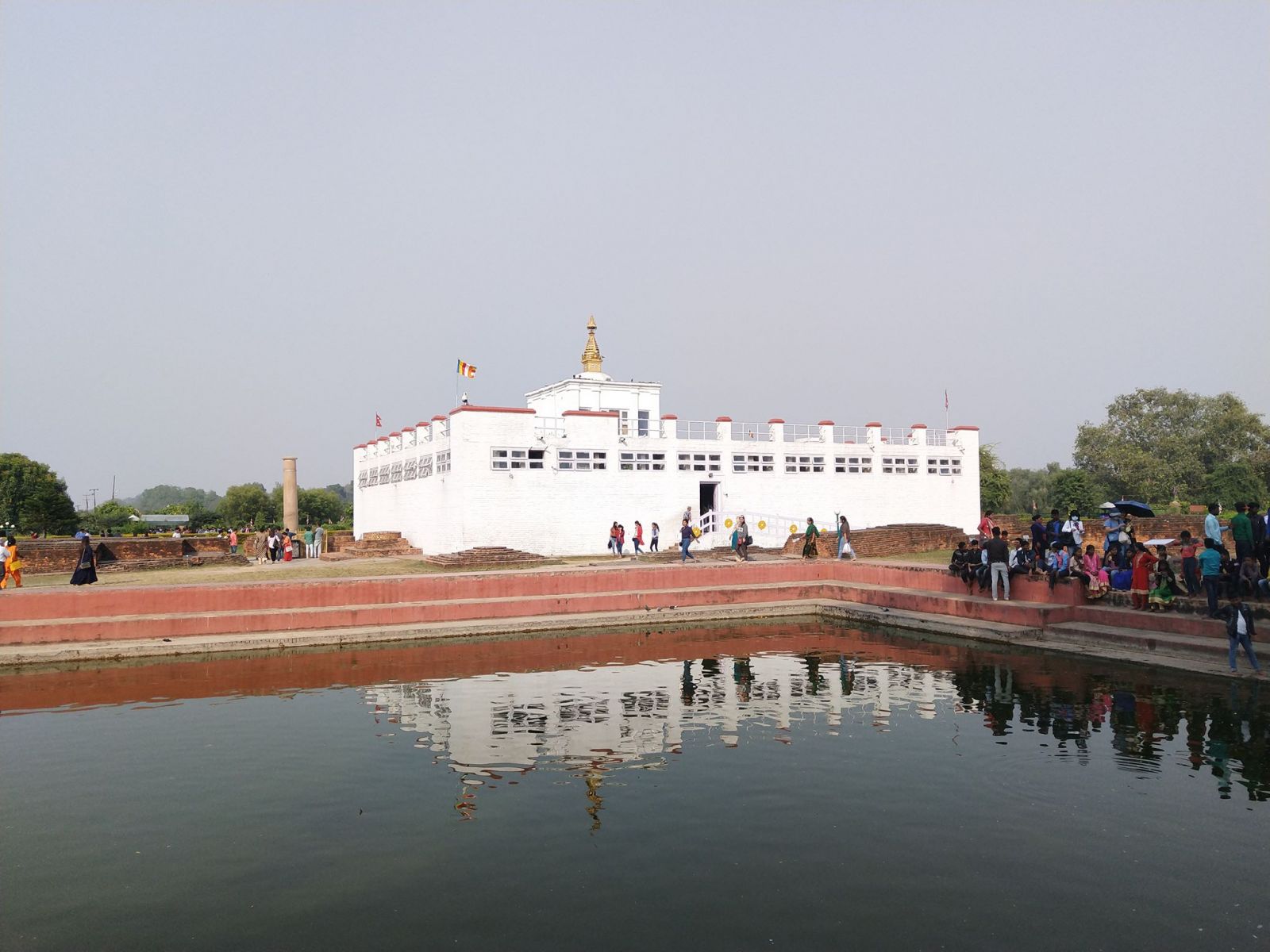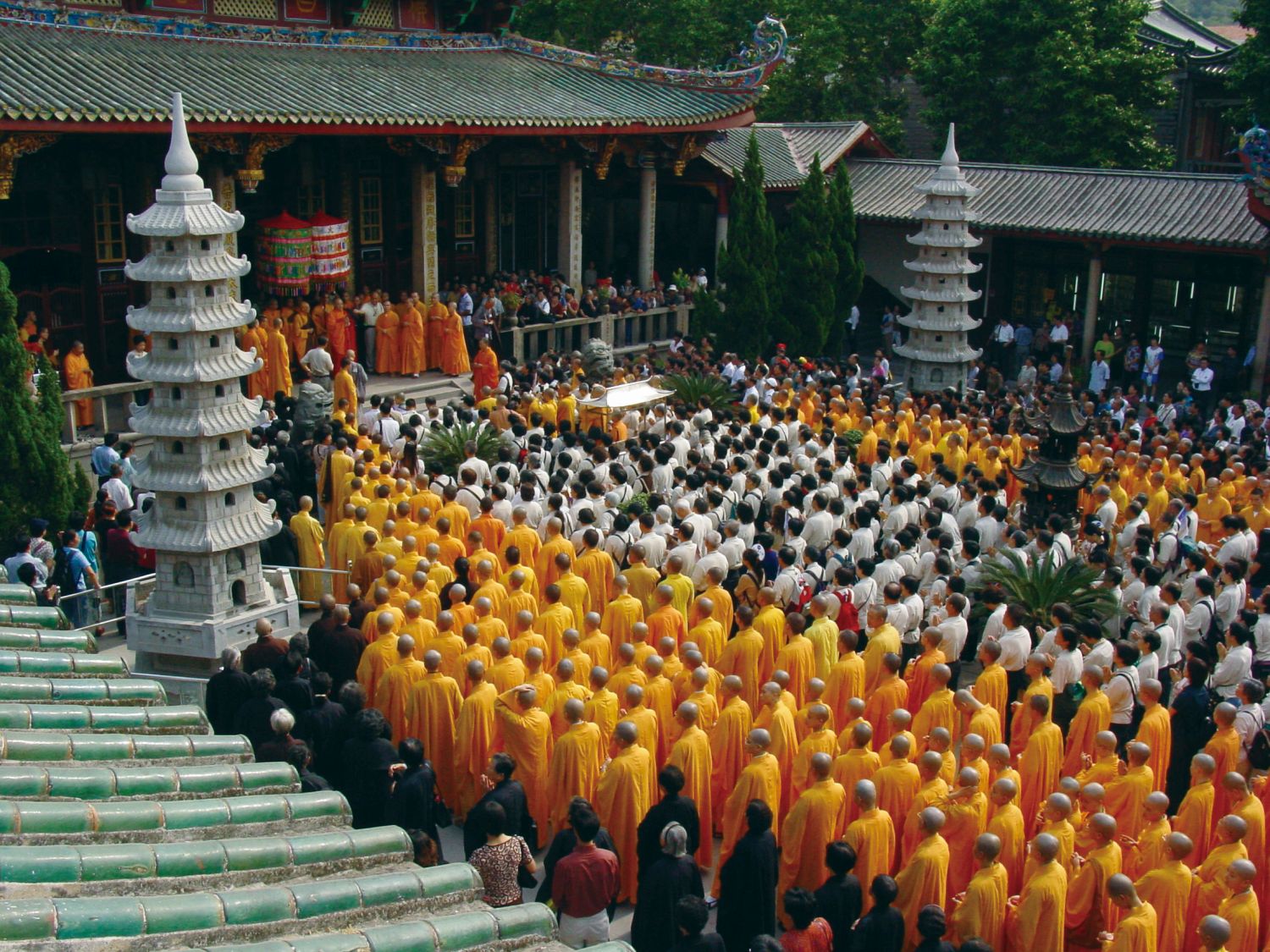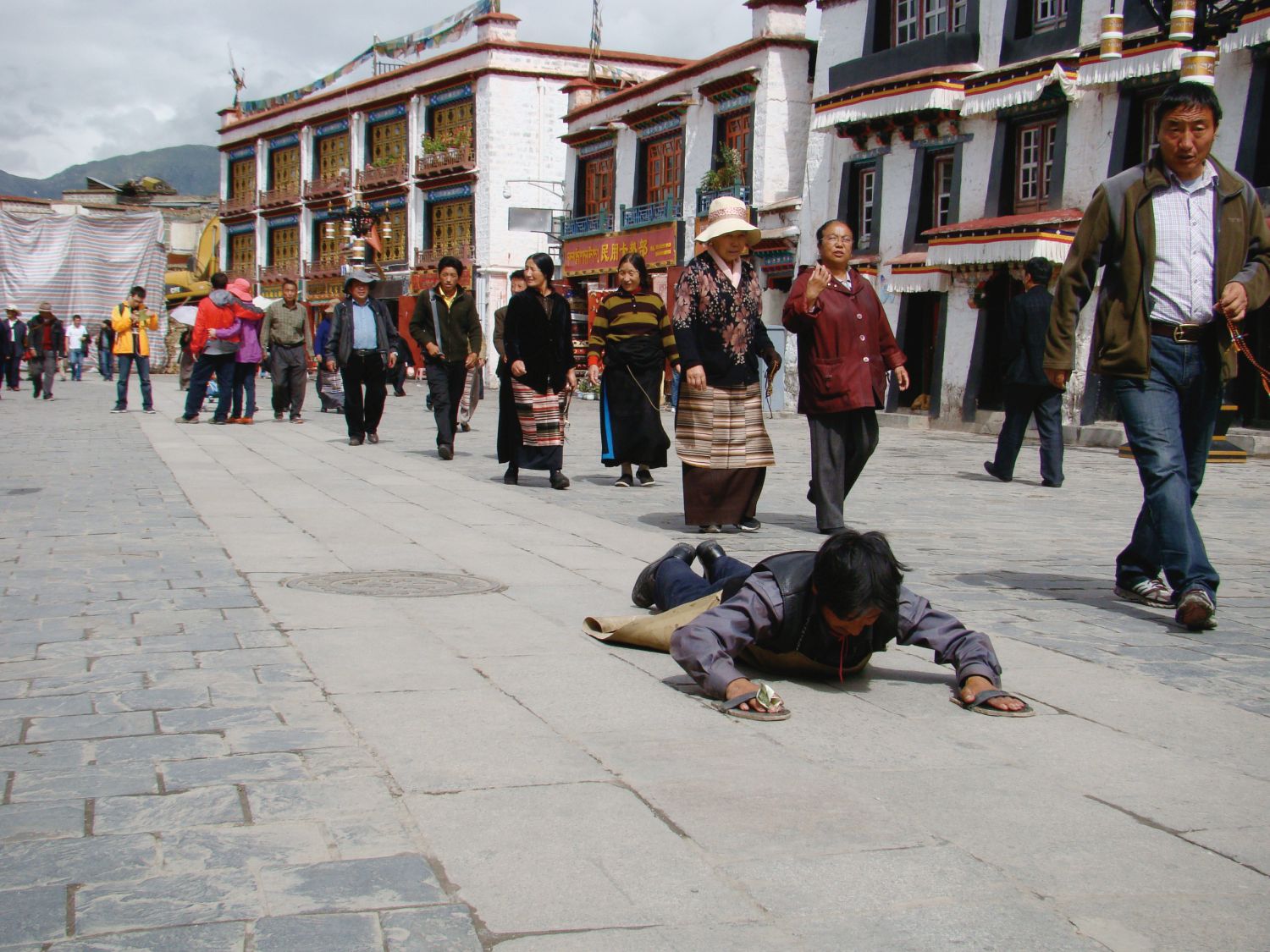Special Topics
Pilgrimage: Following the Footsteps of the Awakened Ones - the Origin of the Holy Sites and the Transformation of the Forms of Pilgrimage
As long as there is a place where Dharma is spread, there are holy sites. Regardless of changes in space and time, believers continue to make pilgrimages to sacred places. Do you know how the holy sites were formed? How are the forms of pilgrimage different?The religious purpose of pilgrimage is to demonstrate firmness of faith through ritual visits to holy sites. Buddhism did not originally use the word "pilgrimage". After the Buddha's passing in India, the disciples began to pay homage to holy sites related to the Buddha's life. Buddhism thus spread from India to the rest of the world; after cultural exchanges with various places, different forms of pilgrimage also emerged.
Primitive Buddhism: Circumambulating the Stupas at Four Great Places and Eight Holy Sites to commemorate the Buddha
 To Buddhists, pilgrimage is to remember the footprints that the Buddha has left in the world. In sutras such as the "Mahāparinibbāna Sutta" in Volume Four of "Dirghagama", "Mūlasarvāstivādavinayakṣudrakavastu", and "Mahaparinirvana Sutra", Ananda asked the Buddha how one can live in peace after the Buddha's Nirvana. The Buddha replied, if one can visit the four places of the Buddha's birth (Lumbini), the Buddha's enlightenment (Bodhgaya), the Buddha's first turning of the Dharma Wheel (Deer Park) and the Buddha's paranirvana (Kushinagar) while developing a reverent and pure heart, one's merits and virtues will be immeasurable. Then, when life ends, one can attain heavenly rebirth.
To Buddhists, pilgrimage is to remember the footprints that the Buddha has left in the world. In sutras such as the "Mahāparinibbāna Sutta" in Volume Four of "Dirghagama", "Mūlasarvāstivādavinayakṣudrakavastu", and "Mahaparinirvana Sutra", Ananda asked the Buddha how one can live in peace after the Buddha's Nirvana. The Buddha replied, if one can visit the four places of the Buddha's birth (Lumbini), the Buddha's enlightenment (Bodhgaya), the Buddha's first turning of the Dharma Wheel (Deer Park) and the Buddha's paranirvana (Kushinagar) while developing a reverent and pure heart, one's merits and virtues will be immeasurable. Then, when life ends, one can attain heavenly rebirth. "Aṣṭamahāsthānacaityastotra" mentions the current locations of the eight major spiritual stupas or holy sites: the place where Buddha was born (Lumbini), the place where Buddha attained full enlightenment (Bodhgaya), the place where the Buddha turned the Wheel of Dharma for the first time (Deer Park), the place where the Buddha manifested great supernatural powers (Sravasti or Jetavana-vihāra), the place where the Buddha descended from Trayastrimsa Heaven (Heaven of the Thirty-three Gods) down to earth (Sankassa), the place where the Buddha taught the Dharma to deliver sentient beings (Rajgir or Vulture Peak), the place where the Buddha delivered his last sermon and announced his passing (Vaishali), and the place where the Buddha entered into Nirvana (Kushinagar).
In the history of Indian Buddhism, the most famous pilgrim was King Ashoka of the Mauryan Dynasty. 200 years after the Buddha's passing, King Ashoka went to pay homage to all the places where the Buddha had been. It is said that he built a total of 84,000 stupas to enshrine the Buddha's relics. King Ashoka also erected huge stone pillars all over India, engraved with teachings to promote the Dharma, the most famous of which is the stone pillar of the Deer Park. Master Faxian of the Eastern Jin Dynasty and Master Xuanzang of the Tang Dynasty traveled respectively by sea and land routes, undergoing all kinds of hardships and difficulties, to make a pilgrimage to the Buddhist country. They also left behind "Records of the Buddha Kingdom" and "Great Tang Records on the Western Regions", thereby allowing us to understand the scene of the holy sites at that time. Today, Buddhism is prosperous in Thailand, Myanmar and Laos in Southeast Asia, and Sri Lanka in South Asia. In the past, many stupas were built according to Buddhist scriptures, and these stupas have also become places of pilgrimage for Buddhists today.
Chinese Buddhism: Four Famous Mountains and Prostration pilgrimage to the ancestral monasteries of the patriarchs
 With the spread of Buddhism, Chinese Buddhists have equally risen to make pilgrimages to India, for the purpose of studying and retrieving the scriptures. Among them are great Buddhist masters, such as Master Faxian, Master Xuanzang, Master Yijing, and others. With the Sinicization of Buddhism from the eighth to the twelfth century AD, Chinese Buddhism reproduced the holy sites of India, and established famous Buddhist mountains where Bodhisattvas manifested in China. With the dissemination of the Avatamsaka Sutra, Mount Wutai (which is believed to be the earthly abode of Manjushri Bodhisattva), and Mount Emei (which is regarded as the ashram for Samantabhadra Bodhisattva) were already famous in the Tang Dynasty. However, Mount Putuo of Avalokitesvara Bodhisattva was established in the Five Dynasties. The reputation of Mount Jiuhua of Ksitigarbha Bodhisattva reached its peak during the Ming and Qing Dynasties, along with the spread of the sacred relics of Kim Gyo-gak*, and it was the latest to be listed as one of the Four Famous Mountains. The Four Famous Mountains in China, further fueled by the legends of miracles, have thus become more famous both at home and abroad. Since then, Buddhists can make pilgrimages in China without having to travel thousands of miles to India.
With the spread of Buddhism, Chinese Buddhists have equally risen to make pilgrimages to India, for the purpose of studying and retrieving the scriptures. Among them are great Buddhist masters, such as Master Faxian, Master Xuanzang, Master Yijing, and others. With the Sinicization of Buddhism from the eighth to the twelfth century AD, Chinese Buddhism reproduced the holy sites of India, and established famous Buddhist mountains where Bodhisattvas manifested in China. With the dissemination of the Avatamsaka Sutra, Mount Wutai (which is believed to be the earthly abode of Manjushri Bodhisattva), and Mount Emei (which is regarded as the ashram for Samantabhadra Bodhisattva) were already famous in the Tang Dynasty. However, Mount Putuo of Avalokitesvara Bodhisattva was established in the Five Dynasties. The reputation of Mount Jiuhua of Ksitigarbha Bodhisattva reached its peak during the Ming and Qing Dynasties, along with the spread of the sacred relics of Kim Gyo-gak*, and it was the latest to be listed as one of the Four Famous Mountains. The Four Famous Mountains in China, further fueled by the legends of miracles, have thus become more famous both at home and abroad. Since then, Buddhists can make pilgrimages in China without having to travel thousands of miles to India.*Korean Buddhist monk who is believed to be the manifestation of Ksitigarbha Bodhisattva at Mount Jiuhua.
In addition, after it was Sinicized, Buddhism flourished during the Sui and Tang Dynasties, forming the so-called "eight sects", such as Tiantai, Huayan, Chan, Pure Land, and Vinaya. The places of Buddhist practice built by the great masters and patriarchs are recognized and respected by the later generations as "ancestral monasteries", in addition to being where Buddhists come from thousands of miles away to seek the Dharma and direction from the great spiritual guides. The ancestral monasteries of Chan Sect or the temples of well-known Chan masters in China-- such as Nanhua Temple and Guangxiao Temple of the Sixth Patriarch Huineng, Baofeng Temple of Mazu Daoyi, and Baizhang Temple of Chan Master Baizhang Huaihai-- are still holy sites visited by Buddhists nowadays.
Tibetan Buddhism: Pilgrimage to the Holy City of Lhasa
Among the many sects of Buddhism, the pilgrimage atmosphere of Tibetan Buddhism can be said to be the most prosperous. As for when the Tibetan pilgrimage started: it is said that due to the fact that Tibetan King Songtsen Gampo built the Potala Palace, the Ramoche Temple enshrined the statue of 12-year-old Buddha Shakyamuni brought by Princess Wencheng, and the Jokhang Temple is dedicated to the 8-year-old Shakyamuni Buddha statue brought by Princess Chizun of Nepal, Lhasa has since become a holy city in the eyes of Tibetans. In the eighth century, after the Tang Dynasty princess Jincheng entered Tibet, she brought the 12-year-old statue of Shakyamuni Buddha, originally enshrined in the Ramoche Temple, to the Jokhang Temple, and moved the 8-year-old statue of Shakyamuni Buddha to the Ramoche Temple. Since then, the two Buddha statues have resided in their respective temples.
 In Tibetan culture, if a person wishes to make a pilgrimage to Lhasa and decides to set out, no one has the right to stop him--not even the Tibetan king, or his parents and children. Tibetan Buddhists firmly believe that, in addition to praying for family members and accumulating merit, pilgrimage can help practitioners transcend the suffering of reincarnation, wash away all wrongdoings, obtain a pure and peaceful body and mind, and attain a beautiful afterlife. Practitioners make a prostration after every three steps while reciting "The Six-Character Mantra" (Om Mani Padme Hum), and press their bodies against the earth to show their devotion to all Buddhas and Bodhisattvas.
In Tibetan culture, if a person wishes to make a pilgrimage to Lhasa and decides to set out, no one has the right to stop him--not even the Tibetan king, or his parents and children. Tibetan Buddhists firmly believe that, in addition to praying for family members and accumulating merit, pilgrimage can help practitioners transcend the suffering of reincarnation, wash away all wrongdoings, obtain a pure and peaceful body and mind, and attain a beautiful afterlife. Practitioners make a prostration after every three steps while reciting "The Six-Character Mantra" (Om Mani Padme Hum), and press their bodies against the earth to show their devotion to all Buddhas and Bodhisattvas.Pilgrimage to Sacred Sites to Recollect the Saints
Pilgrimage: Following the Footsteps of the Awakened Ones - the Origin of the Holy Sites and the Transformation of the Forms of Pilgrimage
Get to Know the Buddhist Holy Lands: Lumbini and Bodhgaya
Get to Know the Buddhist Holy Lands: Sarnath and Kushinagar
Get to Know the Buddhist Holy Lands: Rajgir and Sravasti
Get to Know the Buddhist Holy Lands: Vaishali and Nalanda
Resource: Issue 368 of Life Magazine, Dharma Drum Publishing Corporation
Photos: Issue 368 of Life Magazine, Dharma Drum Publishing Corporation
Translation: Freya Chang (可馨)
Editing: Glen Sha, Keith Brown
